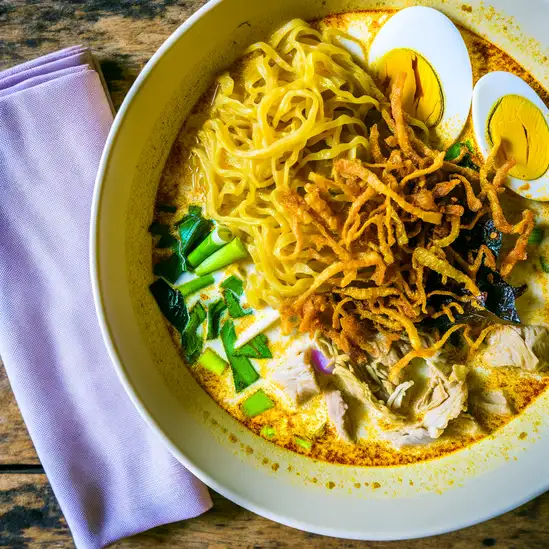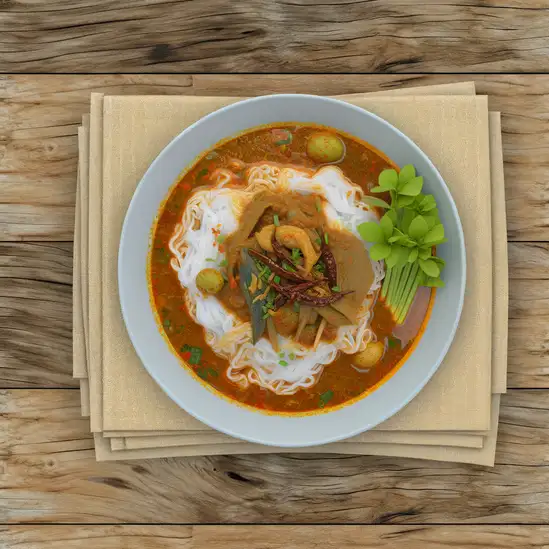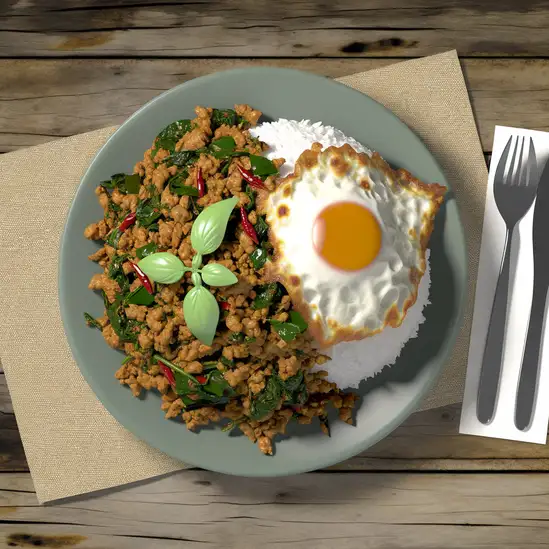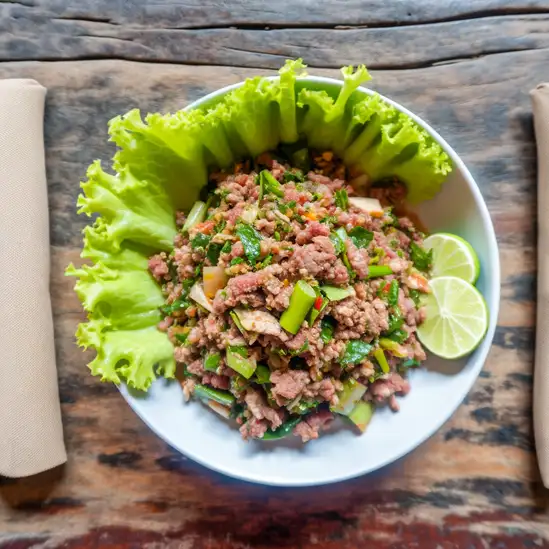



If you find yourself wandering into Amphoe Mueang Kanchanaburi,you’ll immediately notice a rhythm that’s both peaceful and alive—a place where history and nature seem to breathe together. The air carries a fresh,earthy scent from the nearby river and lush forests,mingling with the faint aroma of street food grilling over charcoal. As you stroll along the riverbanks,the gentle murmur of water blends with the distant chatter of locals and the occasional call of birds,creating a soundtrack that feels both calming and inviting. This city wears its past with quiet pride. The famous Bridge over the River Kwai isn’t just a photo op; it’s a poignant reminder of resilience,and standing there,you can almost hear the echoes of stories from decades ago. But Kanchanaburi isn’t stuck in history—it pulses with a warm,welcoming spirit. The markets buzz with vendors selling fresh tropical fruits,spicy som tam,and sticky rice wrapped in banana leaves,tempting your taste buds with every bite. What really makes Kanchanaburi special is how effortlessly it blends adventure with reflection. You can hike through emerald jungles,feel the cool spray of waterfalls on your skin,then settle into a riverside café with a cold Thai iced tea,watching long-tail boats drift lazily by. It’s a place where time slows just enough for you to soak in the beauty,the stories,and the genuine kindness of the people. Trust me,it’s a spot that stays with you long after you’ve left.
The information on this page is currently being reviewed by Tripkliq and should be used as a guide only
Eng word: Hello
Eng pronunciation: sah-wah-dee
Local language: สวัสดี
Eng word: Goodbye
Eng pronunciation: lah-gon
Local language: ลาก่อน
Eng word: Thank you
Eng pronunciation: khawp-khun
Local language: ขอบคุณ
Eng word: How much
Eng pronunciation: tao-rai
Local language: เท่าไหร่
Eng word: Toilet
Eng pronunciation: hong-nam
Local language: ห้องน้ำ
Eng word: Help me
Eng pronunciation: chuay-duay
Local language: ช่วยด้วย
Eng word: Yes
Eng pronunciation: chai
Local language: ใช่
Eng word: No
Eng pronunciation: mai
Local language: ไม่
Eng word: Excuse me
Eng pronunciation: kaw-toht
Local language: ขอโทษ
Amphoe Mueang Kanchanaburi is renowned for the Bridge on the River Kwai, a part of the Death Railway constructed during World War II using POW labor. It's an iconic symbol of peace and the resilience of the human spirit.
This museum in Kanchanaburi provides insights into the construction of the Death Railway. It's dedicated to preserving the memory of those who suffered and died during its construction, offering a poignant look at history.
This cemetery is the final resting place for thousands of Allied POWs who lost their lives during the construction of the Death Railway. It's a place of remembrance and homage to their sacrifices.
This museum presents the history of the Death Railway's construction from the perspective of Japan, England, America, Thailand, and Holland (JEATH). Its exhibits are housed in a replica of a POW camp.
Established during the Ayutthaya period in the 18th century, the ancient city of Kanchanaburi has a rich history that predates its World War II significance, with numerous archaeological sites reflecting its past.
This museum houses prehistoric artifacts discovered in the area, including pottery, tools, and skeletons. It provides a glimpse into the early civilization that once thrived in the region.
Estimated to be over 100 years old, the Giant Rain Tree of Kanchanaburi is a natural landmark. Its vast canopy spreads over a large area, offering a peaceful spot for visitors to marvel at nature's beauty.
These adjacent temples offer breathtaking views of the surrounding landscape. Wat Tham Sua is known for its giant Buddha statue and intricate architecture, while Wat Tham Khao Noi stands out with its Chinese-style pagoda.
Home to the famous Sai Yok Waterfall, this national park near Kanchanaburi also contains historic WWII sites, including remnants of the Death Railway and natural caves used by Japanese soldiers.
In Amphoe Mueang Kanchanaburi, the most common Power Adaptor is Type A, Type B, Type C, Type F.









A creamy coconut curry noodle soup, typically made with chicken or beef, and topped with crispy fried noodles and pickled mustard greens.

A stir-fried rice noodle dish commonly served with shrimp, chicken, or tofu, flavored with tamarind paste, fish sauce, and topped with peanuts and lime.

A spicy green papaya salad made with shredded papaya, tomatoes, green beans, peanuts, and a dressing of lime juice, fish sauce, and chili.

Rice noodles served with a rich and spicy fish curry sauce, often accompanied by fresh vegetables and herbs.

Stir-fried minced pork with holy basil, garlic, and chili, typically served over rice and topped with a fried egg.

A spicy meat salad made with minced meat (usually chicken, beef, or pork), mixed with lime juice, fish sauce, and fresh herbs, often served with sticky rice.

A green curry made with coconut milk, green curry paste, and a variety of vegetables and proteins, often served with rice.

A spicy Thai salad made with grilled beef or pork, mixed with lime juice, fish sauce, and fresh herbs, often served with sticky rice.
Bangkok is one of those cities that grabs you the moment you step out into its bustling streets. There’s this electric energy in the air—a mix of honking tuk-tuks,sizzling street food stalls,and the chatter of locals weaving through markets. The city feels alive,like it’s constantly moving and breathing,yet somehow it balances this chaos with moments of serene beauty,like the golden spires of temples catching the afternoon sun or quiet canals reflecting the sky.
Walking through Bangkok,you’ll be hit by a whirlwind of scents:fragrant jasmine from flower vendors,the sharp tang of lemongrass and chili from street carts,and the sweet aroma of mango sticky rice tempting you at every corner. The colors are just as vivid—neon signs flicker alongside traditional wooden shophouses,and monks in saffron robes glide past modern skyscrapers. It’s a city where old and new dance together effortlessly.
What really makes Bangkok special is its warmth and openness. The people here have a genuine kindness that shines through,whether you’re bargaining at Chatuchak Market or sharing a laugh over a bowl of spicy boat noodles. The culture is rich and layered,from the intricate rituals at Wat Pho to the lively festivals that light up the streets. Visiting Bangkok feels like stepping into a story that’s still unfolding,full of surprises and moments that stay with you long after you leave.
Imagine stepping into a place where the air hums with the gentle rhythm of waves lapping against sun-warmed shores,and the scent of salty sea mingles with fragrant street food stalls. That’s Phuket for you—a vibrant island that feels alive in every sense. It’s not just the stunning beaches that grab you,but the way the island pulses with a laid-back energy,where colorful markets buzz with chatter and the aroma of grilled seafood fills the air. Walking through the old town,you’ll find charming Sino-Portuguese buildings painted in pastel hues,their shutters creaking softly in the tropical breeze,while tuk-tuks zip by,adding a playful soundtrack to your explorations.
Phuket’s character is a beautiful blend of tradition and liveliness. Temples with golden spires peek out from lush greenery,inviting quiet moments of reflection,while nearby,night markets burst with life—vendors calling out,sizzling woks,and the sweet tang of mango sticky rice tempting your taste buds. The island’s culture is warm and welcoming,with locals who smile easily and share stories over cups of strong Thai coffee or fresh coconut water.
What makes Phuket truly special is how it wraps you in its embrace—whether you’re watching a fiery sunset from a cliffside bar,diving into crystal-clear waters teeming with vibrant marine life,or simply savoring the spicy kick of a freshly made curry. It’s a place that invites you to slow down,soak in the colors,sounds,and flavors,and leave with a heart full of unforgettable moments.
If you find yourself wandering into Amphoe Mueang Krabi,get ready to be wrapped in a warm embrace of nature and culture that feels both vibrant and soothing. The moment you step into this lively district,the salty tang of the Andaman Sea mingles with the sweet scent of tropical flowers,setting a scene that’s as refreshing as it is inviting. The streets buzz gently with the chatter of locals and the clinking of street food stalls,where the aroma of grilled seafood and spicy herbs teases your senses and promises a feast.
What makes Mueang Krabi truly special is how effortlessly it balances its laid-back island charm with a pulse of authentic Thai life. You’ll find yourself wandering through bustling markets filled with colorful fruits,handmade crafts,and the friendly smiles of vendors eager to share stories. The rhythm of daily life here is unhurried but alive,with monks in saffron robes gliding past ancient temples,and fishermen hauling in their catch against a backdrop of limestone cliffs that rise dramatically from the turquoise waters.
Spend your days exploring hidden coves or kayaking through mangrove forests,and your evenings savoring fresh seafood at a beachside shack while the sun dips low,painting the sky in fiery hues. There’s a genuine warmth in the air—both from the tropical sun and the people—that makes you feel like you’re not just visiting,but truly belonging. Mueang Krabi isn’t just a place to see; it’s a place to feel,taste,and remember long after you’ve left.
If you’re thinking about Pattaya,imagine a place where the energy hums like the waves crashing along its shores,but with a laid-back twist that invites you to slow down and soak it all in. The city pulses with life—colorful markets buzz with chatter and the scent of grilled seafood mingles with salty sea air. As you stroll along the beach,the warm sun kisses your skin while the distant laughter of children and the rhythmic beat of live music from nearby bars create a soundtrack that feels both vibrant and welcoming.
What really makes Pattaya stand out is its blend of contrasts. You’ll find sleek,modern high-rises standing shoulder to shoulder with humble street vendors selling fresh mango sticky rice or spicy papaya salad. The city’s character is a lively mix of local Thai culture and international influences,making it a melting pot where you can dive into traditional temples one moment and then explore quirky art galleries or bustling night markets the next.
Don’t miss the chance to experience the city’s unique charm at sunset—head to a rooftop bar or the beach itself,where the sky explodes in shades of pink and orange,and the air cools just enough to make you want to linger. Pattaya isn’t just a place to visit; it’s a place to feel alive,to taste new flavors,hear new stories,and create your own unforgettable memories.
If you find yourself wandering into Amphoe Mueang Chiang Mai,it’s like stepping into a lively tapestry woven with ancient charm and modern buzz. The moment you stroll through its old city walls,you’re greeted by the gentle hum of scooters weaving past centuries-old temples,the scent of incense mingling with sizzling street food. There’s a rhythm here that feels both peaceful and vibrant,like the city is breathing stories through its narrow lanes and bustling markets.
What really makes Chiang Mai special is how it balances tradition and creativity. You can watch monks in saffron robes collecting alms at dawn,then spend the afternoon sipping rich,locally grown coffee in a hip café filled with art and laughter. The night markets are a sensory feast—bright lanterns flicker overhead,vendors call out with friendly smiles,and the air is thick with the aroma of grilled meats,spicy papaya salad,and sweet mango sticky rice. It’s a place where every corner invites you to slow down and savor the moment.
Beyond the city’s pulse,the surrounding mountains cradle a cooler breeze and lush greenery,offering a refreshing escape from the tropical heat. But it’s the warmth of the people—their genuine smiles and easy hospitality—that truly stays with you. Chiang Mai isn’t just a destination; it’s a feeling,a place where history,culture,and everyday life blend into an unforgettable experience that keeps you coming back for more.
If you’re dreaming of a place where the pace slows just enough to let you breathe in the salty sea air and feel the warm sun kiss your skin,Koh Samui is that kind of magic. The island hums with a laid-back energy that’s both soothing and invigorating—like a gentle invitation to explore without rushing. Palm trees sway lazily against a backdrop of turquoise waters,and the soft crash of waves creates a soundtrack that instantly melts away any stress. Walking along the beaches,you’ll catch the scent of frangipani mingling with the faint aroma of grilled seafood from nearby beachside shacks.
What really makes Koh Samui special is its blend of vibrant local culture and natural beauty. The island’s temples,like the striking Big Buddha,offer moments of quiet reflection amid the tropical buzz. At night,the markets come alive with colorful stalls selling everything from fresh mango sticky rice to spicy papaya salad,each bite bursting with bold,fresh flavors that tell stories of the land and sea. Friendly locals greet you with warm smiles,eager to share their traditions and stories.
Beyond the beaches,there’s a wild side to Koh Samui—lush jungles with hidden waterfalls,secret viewpoints that reward you with breathtaking panoramas,and cozy cafes tucked away where you can sip rich Thai coffee while watching the world go by. It’s a place that feels both familiar and wonderfully new,where every moment invites you to slow down,savor,and soak in the island’s unique rhythm.
Scammers pose as officials and charge fake entry fees for free or low-cost attractions.
Some exchange booths give incorrect amounts or use unfavorable rates to cheat tourists.
Scammers ask tourists for donations to fake charities or causes, often claiming to help local children or temples.
Scammers impersonate police officers and accuse tourists of minor infractions, demanding bribes to avoid trouble.
Unlicensed guides offer tours to popular attractions but provide poor service or mislead tourists about costs.
Tourists are lured into buying overpriced or fake gemstones from shops claiming they are rare and valuable.
Rental shops falsely claim tourists damaged motorbikes and demand excessive repair fees.
Tourists are sold expensive rafting packages that are not worth the price or differ from what was promised.
Tourists are pressured into buying souvenirs at inflated prices, often at shops recommended by drivers or guides.
Tuk-tuk drivers quote inflated prices for short rides or take tourists to shops where they earn commissions.
Thailand has very strict drug laws, and Amphoe Mueang Kanchanaburi is no exception. The possession, use, or trafficking of illegal drugs can result in severe penalties, including long prison sentences and heavy fines. Some drugs that may be legal in other countries are considered illegal in Thailand. Tourists should exercise extreme caution and avoid any involvement with illegal substances.
In Amphoe Mueang Kanchanaburi, as in the rest of Thailand, smoking is prohibited in public places such as government buildings, public parks, public transport, and indoor public spaces including restaurants and bars. There are designated smoking areas where smoking is allowed. Violating these regulations can result in fines.
Vaping is strictly regulated in Thailand, and the import, sale, and possession of e-cigarettes and vaping equipment are illegal. Tourists should be aware that bringing vaping devices into the country can result in confiscation, fines, or even imprisonment.
What are other people saying about Amphoe Mueang Kanchanaburi?
Recent Social posts about Amphoe Mueang Kanchanaburi
There is nothing to show you for now.